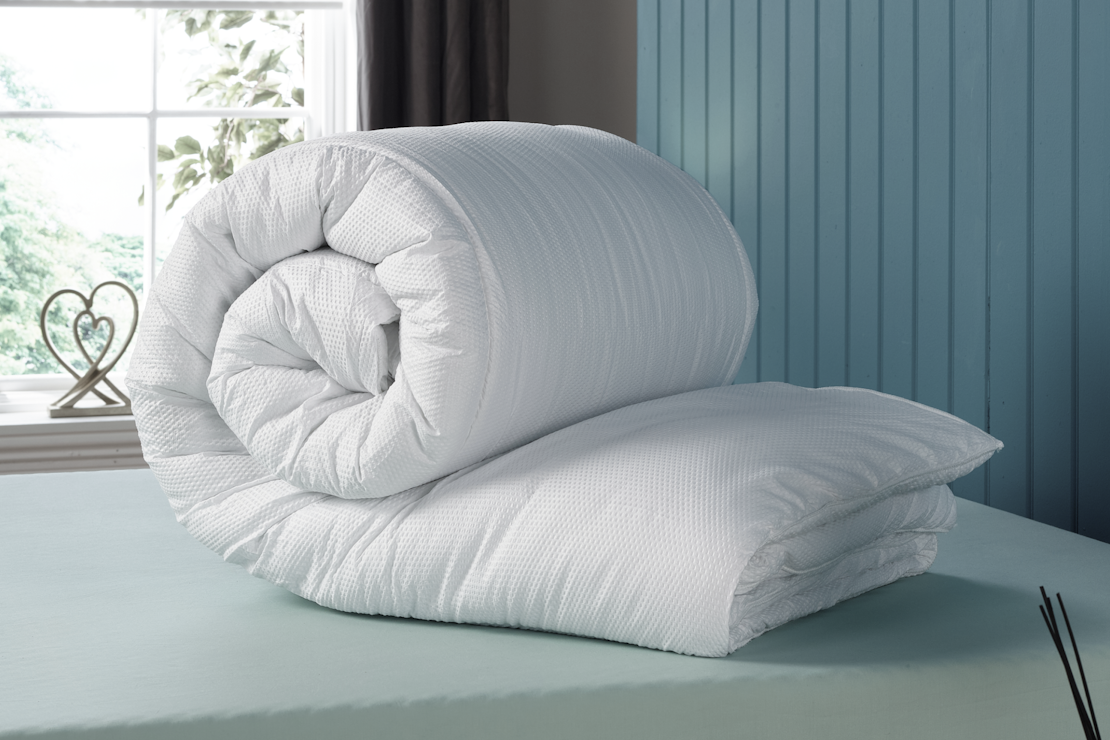13 Oct 2025

How to Store Duvets Properly for Long-Lasting Freshness
04 Jun 2025
Storing your duvet properly keeps it fresh, clean, and extends its lifespan, whether you’re putting it away for the season or simply making space. The best way to store your duvet is to keep it clean, completely dry, and in a cool, dry, and well-ventilated area. Simple steps like folding or loosely rolling your duvet and avoiding damp or dusty spaces make a noticeable difference.
Organised storage solutions, like a linen cupboard or breathable storage bag, help prevent mould, mildew, and unpleasant odours. Choosing the right method saves space and ensures your bedding is ready to use whenever you need it.
Key Takeaways
- Proper storage preserves your duvet’s quality and cleanliness
- Use cool, dry, and ventilated places to avoid damage
- Smart organisation means your duvet stays fresh and ready
Best Practices for Storing Duvets
Proper duvet storage extends the life of your bedding and maintains cleanliness. Storing in the right conditions and using the best protection methods prevents common issues such as damage from moisture, pests, and dust.
Preparation and Cleaning
Always wash and dry your duvet thoroughly before storage. This removes dust, sweat, and any potential irritants that can degrade the material over time. Make sure your duvet is completely dry, as any retained moisture encourages mould and mildew.
Check for soiled areas or small tears. Mend any minor damage before putting the duvet away, as repairs will be easier to manage with the duvet out and clean. For feather or down duvets, follow care instructions closely to avoid clumping or damage.
Consider placing the duvet inside a cotton storage bag or old pillowcase rather than plastic. Cotton is breathable, allowing residual moisture to escape and preventing musty odours.
Choosing Suitable Storage Locations
Select a cool, dry, and clean location for storage, such as a linen cupboard or under-bed storage box. Avoid sheds, attics, basements, or garages, as these areas often suffer from moisture, temperature fluctuations, and pests.
Ample airflow is key to avoid mould and musty smells. Do not pack duvets tightly between other belongings. Instead, allow space around them to circulate air.
Plastic storage boxes with lids offer some protection, but ensure your duvet is dry and clean first. For added convenience and organisation, label storage boxes or bags with the size and type of duvet stored.
Folding Versus Rolling
How you store your duvet impacts its shape and loft. For synthetic or regular duvets, folding is usually fine. Fold into thirds lengthwise, then across, to reduce creasing and fit it easily into storage.
For feather or down duvets, rolling is preferable. Gently roll the duvet without compressing too tightly, which helps prevent clumping and maintains the loft. Place the rolled duvet inside a breathable storage bag.
If using vacuum storage bags, remember that some duvet fillings can be damaged by long-term compression. Check manufacturer’s advice before compressing and never store down duvets this way long-term.
Protecting Against Moths and Dust
Store duvets in dust-proof bags or cotton covers to shield against dust and debris. Avoid plastic bags as they can trap moisture, leading to mould.
To deter moths, add natural repellents like lavender sachets or cedar blocks to your storage space. Always ensure these do not touch the fabric directly to avoid staining.
Inspect the storage area periodically for pests and dust buildup. Clean storage containers and air out duvets every few months if storing long-term to keep them fresh and pest-free.
Storage Solutions and Organisation
Proper storage helps keep your duvet in good condition, prevents mould and mildew, and saves space. Choosing the right storage method depends on your space, the type of duvet, and how often you need access.
Vacuum Storage Bags
Vacuum storage bags are useful for maximising space. They compress your duvet, making it easier to store in compact areas such as under the bed or on high shelves. To use them, fold or roll your duvet carefully, place it inside the bag, seal it, and use a vacuum to remove the air. This method protects against dust, mites, and moisture, although long-term use can flatten some fillings.
Avoid using vacuum bags for down or feather duvets as it can damage the filling and reduce loft. Synthetic duvets are better suited to this method. Always check the bag’s seal before storing and label each bag with its contents for easy identification.
Breathable Fabric Storage Bags
Breathable fabric storage bags are designed to allow airflow and prevent moisture build-up. They are ideal for natural fibre duvets such as down, feather, or wool, which benefit from ventilation. These bags help prevent musty smells and mould, especially when stored in cool, dry locations like a linen cupboard.
Choose bags with a sturdy zip and handles for easy transport. Avoid tightly compressing the duvet, as natural fillings should retain their loft. Make sure your duvet is completely dry before packing it away to minimise the risk of mildew. Some fabric bags feature a clear window or label pocket, which helps you identify the contents quickly.
Under-Bed and Wardrobe Options
Storing duvets under the bed or inside wardrobes can save space and keep bedding organised. Plastic storage boxes are popular for under-bed storage, offering protection from dust and pests. Look for boxes with tight-fitting lids and adequate internal space to avoid squashing the duvet.
Inside wardrobes, use a dedicated shelf or hanging storage organiser for quick access. Ensure items are not packed too tightly to allow air circulation. If you lack a built-in linen cupboard, portable shelving units or rolling under-bed drawers can be practical alternatives. Always store in a location that remains cool and dry throughout the year.


